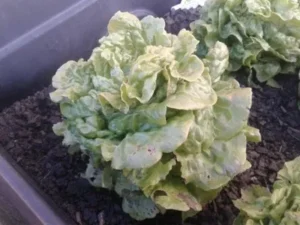How to Grow Lettuce Successfully: Proven Tips for Gardeners
Growing your own lettuce can be one of the most rewarding experiences for any gardener. There’s nothing quite like the taste of fresh, crisp greens straight from your garden, and with the right techniques, it can be easier than you think. Whether you’re a seasoned gardener or just starting, you’ll find that lettuce is a forgiving and versatile crop that thrives in various conditions.
In this comprehensive guide, we promise to equip you with proven tips and techniques to ensure your lettuce grows successfully. From selecting the right varieties to understanding soil requirements and watering practices, you’ll learn everything you need to cultivate a vibrant, healthy lettuce garden.
Get ready to dive into the world of lettuce gardening as we walk you through each essential step to achieve a bountiful harvest. Your journey to growing lush, delicious lettuce starts here!
Understanding Lettuce Varieties
Types of Lettuce
Before diving into the planting process, it’s crucial to understand the different types of lettuce available. Each variety has unique characteristics, flavors, and growing requirements. Here are the main types of lettuce:
- Leaf Lettuce: This type has loose leaves that can be harvested at any time. It is the fastest-growing type of lettuce, making it ideal for successive planting. Popular varieties include ‘Red Romaine’ and ‘Buttercrunch.’
- Romaine Lettuce: Known for its upright leaves and firm texture, romaine is commonly used in Caesar salads. It takes a bit longer to mature than leaf lettuce but offers a heartier flavor.
- Butterhead Lettuce: This type has a soft, buttery texture and a sweet flavor. Varieties like ‘Bibb’ and ‘Boston’ are popular choices that grow well in cooler weather.
- Crisphead Lettuce: Also known as iceberg lettuce, this variety has a tight head and a crunchy texture. It requires more care and a longer growing season but is a favorite for salads and sandwiches.
Choosing the Right Variety
When selecting the right variety, consider your climate and growing conditions. Different types of lettuce thrive in varying temperatures and soil types. Leafy lettuces are ideal for warmer climates, while crisphead varieties prefer cooler temperatures. Additionally, consider your flavor preferences and how you plan to use the lettuce in your cooking.
Preparing the Garden Bed
Selecting the Right Location
The success of your lettuce garden begins with choosing the right location. Lettuce thrives in full sun but can also tolerate partial shade, especially in warmer climates where excessive heat can lead to bolting (the premature flowering of the plant). Aim for at least 6 hours of sunlight per day.
Soil Preparation
Testing Soil pH and Nutrient Levels
Lettuce grows best in well-draining, nutrient-rich soil with a pH between 6.0 and 7.0. Before planting, test your soil to determine its pH and nutrient levels. You can purchase a soil testing kit at a garden center or send a sample to a local agricultural extension office.
Amending Soil with Organic Matter
If your soil is lacking in nutrients or has poor drainage, amend it with organic matter such as compost or well-rotted manure. This not only enriches the soil with nutrients but also improves its texture and drainage capabilities. Spread a layer of organic matter over the planting area and work it into the top 12 inches of soil.
Tilling the Soil for Aeration
After amending the soil, till it to aerate and break up any compacted areas. This step is crucial for root development and ensures that your lettuce can access the necessary nutrients and moisture.
Planting Lettuce Seeds
When to Plant
Timing is critical when it comes to planting lettuce. Generally, lettuce is a cool-season crop that can be planted in early spring or late summer for a fall harvest. Here’s a quick breakdown of planting times:
- Spring Planting: Sow seeds 2-4 weeks before the last frost date in your area.
- Fall Planting: Sow seeds in late summer, about 6-8 weeks before the first expected frost date.

How to Plant
Seed Depth and Spacing
Lettuce seeds are small and should be planted at a depth of 1/8 to 1/4 inch. Space the seeds about 2 inches apart to allow for proper growth. Once the seedlings emerge, thin them out to about 6-12 inches apart, depending on the variety. Thinning helps reduce competition for nutrients and ensures that each plant has enough space to thrive.
Direct Sowing vs. Starting Indoors
You can either sow seeds directly into the garden or start them indoors for an earlier harvest. If starting indoors, plant seeds in seed trays or small pots about 4-6 weeks before the last frost date. Once the seedlings have developed 2-3 true leaves, transplant them outdoors, ensuring they are hardened off to acclimate them to outdoor conditions gradually.
Caring for Lettuce Plants
Watering Techniques
Importance of Consistent Moisture
Lettuce requires consistent moisture to thrive. The soil should be kept evenly moist but not waterlogged. Fluctuations in moisture can cause the plants to bolt or develop bitter-tasting leaves.
Best Watering Practices
Water your lettuce plants in the early morning or late afternoon to minimize evaporation. If using a sprinkler, avoid wetting the leaves to prevent fungal diseases. A soaker hose or drip irrigation system is ideal for providing a consistent water supply while keeping the foliage dry.
Fertilization
Choosing the Right Fertilizer
Lettuce is a nutrient-hungry plant and benefits from regular fertilization. Use a balanced, slow-release fertilizer or organic options like fish emulsion or compost tea. These options provide a steady supply of nutrients without overwhelming the plants.
Frequency of Fertilization
Fertilize your lettuce plants every 4-6 weeks, starting a couple of weeks after planting. Monitor the plants for signs of nutrient deficiencies, such as yellowing leaves, which may indicate a need for additional fertilization.
Weed and Pest Management
Common Pests and Diseases
Lettuce can fall victim to various pests and diseases, including aphids, slugs, and downy mildew. Regularly inspect your plants for signs of infestation or disease and take action promptly to protect your crop.
Organic Pest Control Methods
Utilize organic pest control methods, such as introducing beneficial insects (like ladybugs) or using insecticidal soap. Handpicking pests like slugs and removing any infected leaves can also help manage issues.
Harvesting Lettuce
Signs of Readiness
When to Harvest Different Types of Lettuce
The timing of your harvest depends on the type of lettuce you’re growing. Generally, you can begin harvesting leaf lettuce as soon as the leaves are large enough to eat, typically within 30-45 days after sowing. For romaine and butterhead varieties, wait until the heads are firm and fully formed.
Best Practices for Cutting and Handling
When harvesting, use a sharp knife or garden shears to cut the lettuce just above the soil line. Avoid pulling the plants out of the ground, as this can disturb the roots and affect remaining plants. Handle the harvested leaves gently to prevent bruising.
Post-Harvest Care
Storing Fresh Lettuce
After harvesting, rinse the lettuce leaves gently under cool water to remove any dirt or debris. Pat them dry with a clean towel or use a salad spinner to remove excess moisture. Store the cleaned lettuce in a plastic bag or container lined with a paper towel to absorb moisture and keep it fresh.
Tips for Prolonging Shelf Life
To extend the shelf life of your lettuce, keep it in the crisper drawer of your refrigerator. Proper storage can help maintain freshness for up to a week, depending on the variety.
Troubleshooting Common Issues
Addressing Common Problems
Slow Growth
If your lettuce is growing slowly, check the soil moisture levels and ensure they are consistent. Additionally, verify that your plants are receiving enough sunlight. Lack of nutrients may also be a factor, so consider fertilizing if necessary.

Leaf Discoloration
Yellowing leaves can indicate various issues, including nutrient deficiencies, overwatering, or pests. Inspect your plants closely to identify the root cause and take appropriate action.
Bolting
Bolting occurs when lettuce prematurely flowers and produces seeds, leading to a bitter taste. To prevent bolting, plant lettuce in the right season and provide adequate moisture. If bolting occurs, consider harvesting the leaves before they become too bitter.
Solutions and Tips for Prevention
- Practice Crop Rotation: Rotate your lettuce crops each season to minimize disease risks and nutrient depletion.
- Use Row Covers: Protect young seedlings from pests and harsh weather conditions by using lightweight row covers.
- Regular Maintenance: Consistently monitor your garden for pests, diseases, and environmental conditions to catch any issues early.
Short Summary
Growing lettuce successfully is an attainable goal for gardeners of all skill levels. By understanding the different varieties, preparing the soil, planting at the right time, and providing proper care, you can enjoy a bountiful harvest of fresh, crisp lettuce. Remember to monitor for pests, diseases, and environmental conditions to ensure your plants thrive. With the tips and techniques outlined in this guide, you’ll be well on your way to enjoying the delicious taste of homegrown lettuce straight from your garden.
Your journey to growing lush, delicious lettuce starts here! Don’t hesitate to share your experiences, ask questions, or seek further advice from fellow gardeners. Happy gardening!



